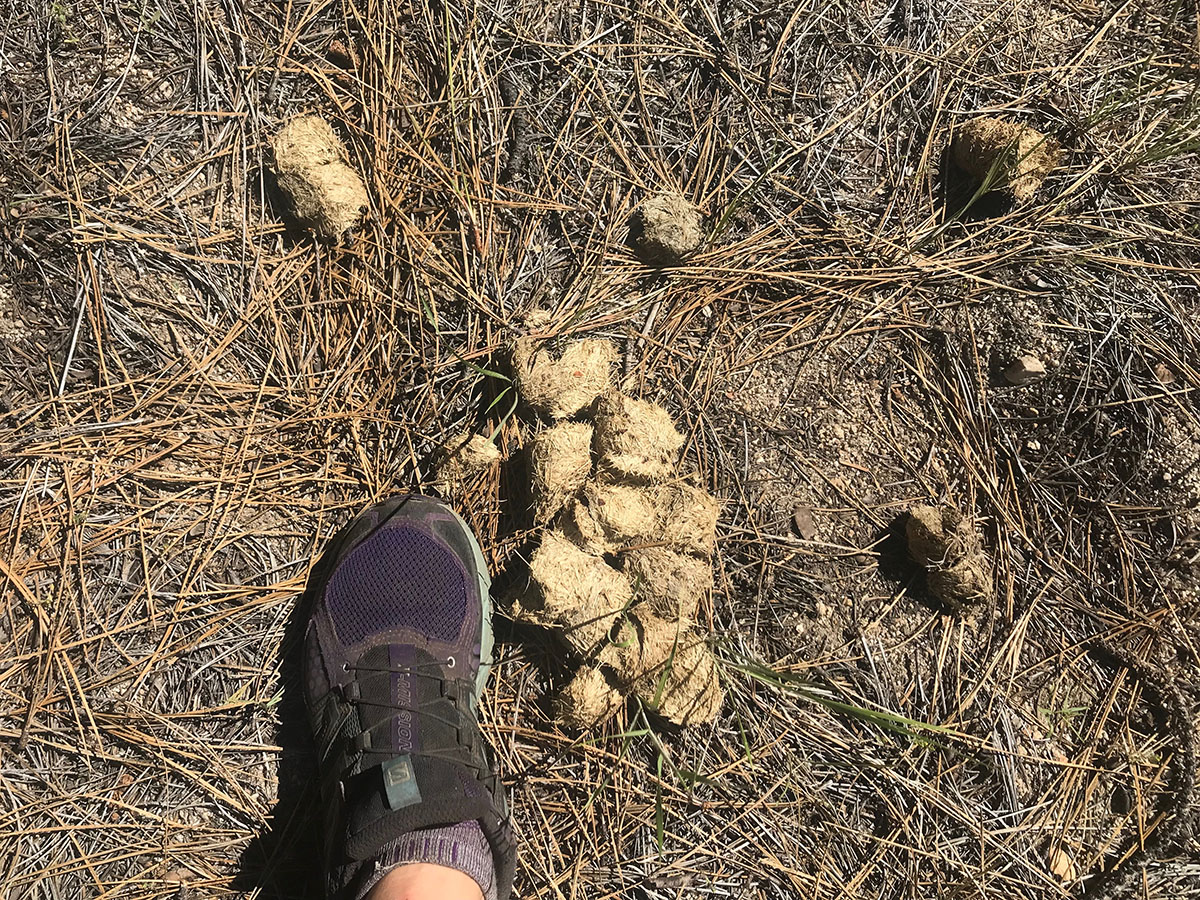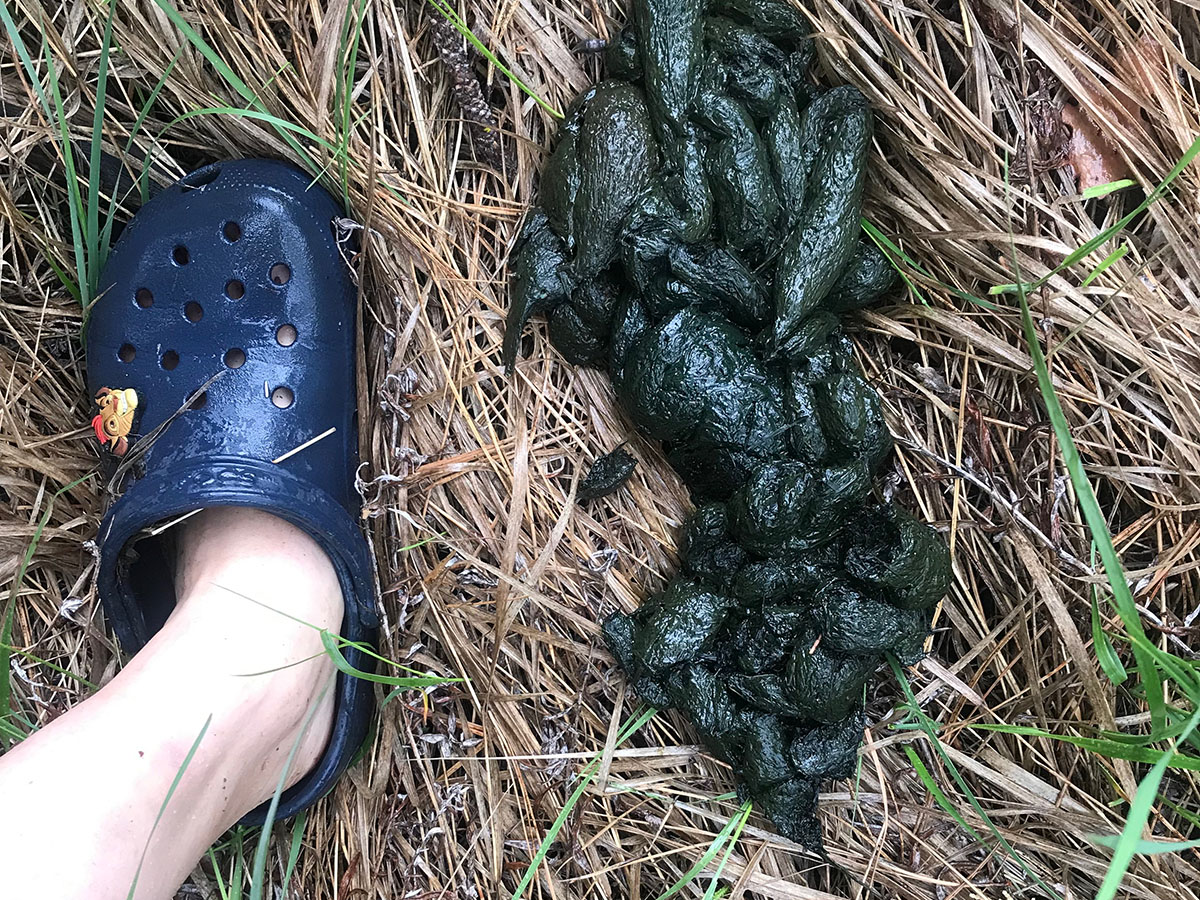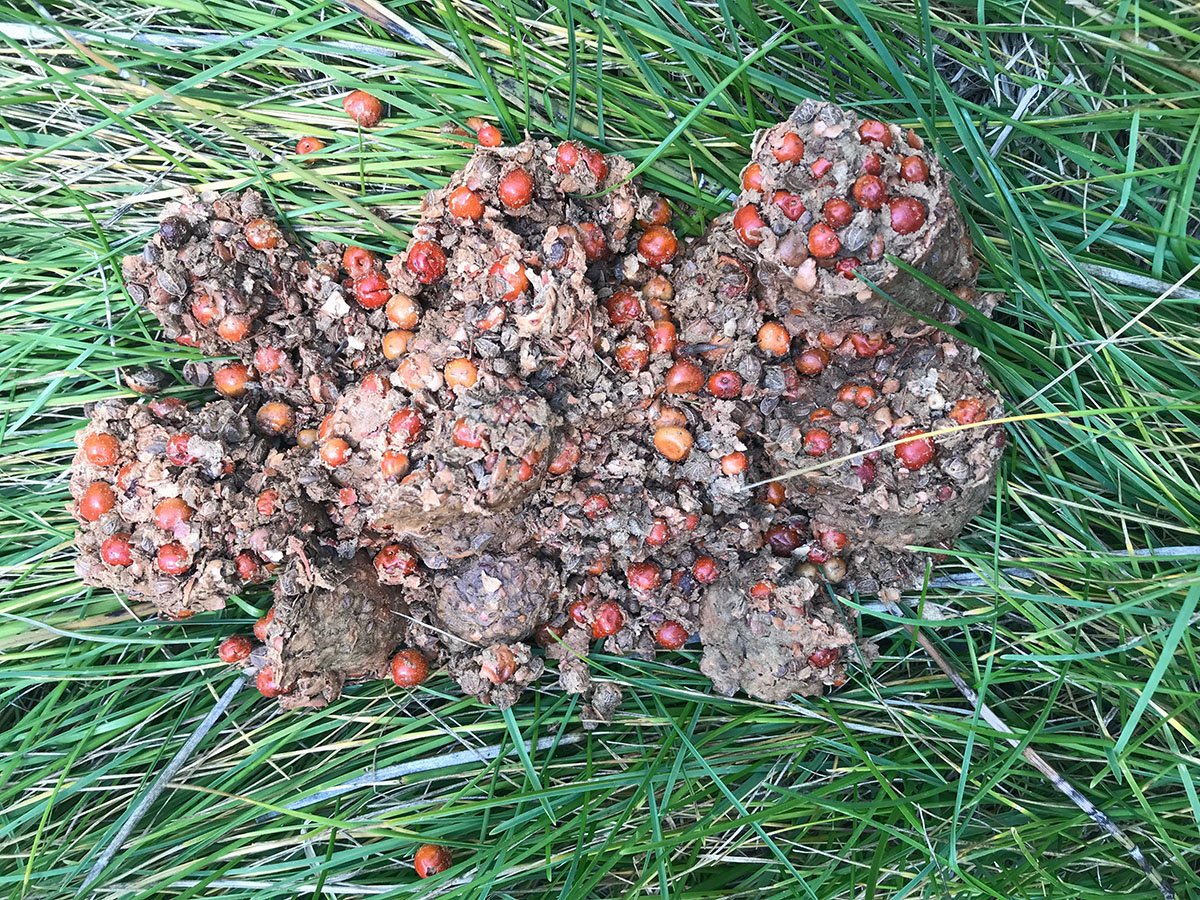

Scat
You are walking along outside when you come upon a large pile of poop. How can you tell if it’s bear poop? Given the variation in their diets, bear scat from one bear can look very different from another bear. Poop from the same bear may look entirely different on different days. So, how can you tell?


Grass scat
Black bears are omnivores and eat a wide range of foods including grass, roots, fruit, insects, fish, and animal carcasses. Their digestive system is similar to a human’s; they have a stomach and a small and large intestine. Some things will digest in the bear’s stomach and won’t be visible in the scat, while other things, like apple peels, seeds, fur, and bones will be present in the poop. Black bear poop can take on many shapes. The color and composition of their poop will change with the seasons, as does their diet. In the spring, bears eat a lot of grass and insects, so their poop is often green and tubular, with grass visible. In the late summer and fall, bear poop will be looser and in large plops, with berries and apple pieces visible.


Berry scat
What other types of poop may you come across? Here in Yosemite, you may stumble upon coyote, raccoon, mountain lion, or bobcat poop, all of which can be confused with bear poop. Coyote poop is also tubular and may contain the same foods, but it usually looks like a pile of twisted rope. Raccoons go to the bathroom in the same spot over and over, so their poops will be found in large piles called latrines. Bobcats and mountain lions both have segmented poops, a characteristic common to felines. Their poop is dense and won’t flatten if you step on it. All of the poop piles mentioned above are smaller than a bear’s.


Scat
Well, now that you’ve got the data on the scat-a, go out and find some bear poop!
